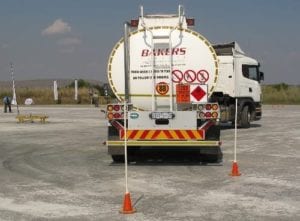Driver training is an important aspect of operating a successful transport operation. Eric Stuttaford, a transport consultant, says there is another equally important aspect companies also need to focus on apart from teaching drivers how to drive more efficiently.
“It is very rewarding to see progressive companies making investments in driver training with the objective of reducing operating costs by reducing fuel consumption and so forth.It is even better if the companies can find a way of getting the drivers to apply what they have learned voluntarily, and not go back to old driving habits.” Company objectives Aftermany years in the transport industry, specifically in fuel distribution, it has become clear to me that even more important than training drivers on vehicle technical driving skills (e.g. green-band driving, use of retarders and engine brakes) is educating the drivers in what the company’s overall objectives are, and persuading them to employ or refute behaviours the company’s value system allows and disallows. Values A list of company values or a missionstatement is an essential tool to facilitate this. Good drivers need to know what the company’s values and objectives are, so they can align their own values and behaviours with those of the company. Thorough discussion of the company’s values and Objectives and how they affect the different stakeholders must be part of induction and ongoing training and education. Good drivers need to be people of good character, in order tointernalize and accept the company’s values, and work willingly within the company’s value system. Those inclined to rebellious or reckless behaviour do not generally make good drivers. When joining a new company (effectively a new community) the driver has to learn what the new rules and regulations are to be able to apply them, and it is critical that everyone in the company helps him to do so. He needs a clear understanding of what the company’s values are and what they allow and disallow. Companies need to publicise this information widely and consistently, and of great importance is the need for all employees from CEO to cleaners to set good examples by ‘walking the talk’. They must all exert good influences on new drivers to do the same – because they believe it is right and because they want to.The last four words are the most important!
Successful Only when you have drivers following legislation, company regulations and applying the technical aspects of driver training because they want to, can you say that your driver recruitment, induction, training and education system is successful. To assess this transparently, it is also a very good idea to provide drivers and front line supervisors with a tool to measure all aspects of driver performance. By plotting various degrees of driving competency against various levels of voluntary commitment to desired behaviours on a simple “Self-Assessment Matrix” youcan enable drivers and supervisors to rate performance transparently and link the results to incentives or reward schemes. Such a matrix looks like this and provides a fair and consistent way of monitoring and measuring performance. It can help eliminate favouritism from supervisors as well.|
Professional Driver Self-Assessment Matrix |
|||
| Competence | |||
| Proficient | |||
| Competent | |||
| Unskilled | |||
| Commitment | Does not comply with rules | Complies reluctantly but cuts corners | Fully committed- Follows rules and procedures as he believes it is the right way to work |








